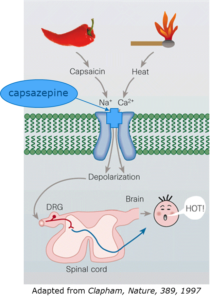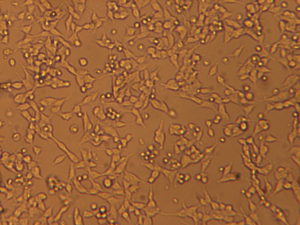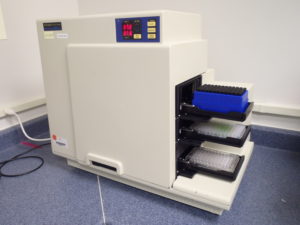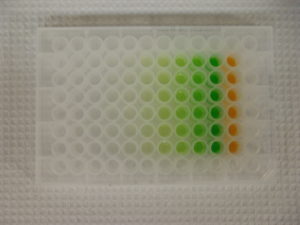Many personal care and cosmetic products accidentally contact the eye, which is very sensitive to numerous compounds that would otherwise be benign when applied to the skin. Due to the pain and stinging that is perceived, it is important for manufacturers of these products to be aware of the potential pain perceived should eye contact occur.
Due to the subjective nature of the unpleasant perception, animal models are inconclusive and may even be prohibited due regulations. Fortunately, IIVS has developed a cell-based assay to evaluate this response.

TRPV1 Channel Mechanism
The NociOcular Assay predicts the eye stinging potential of materials, such as cosmetics, sunscreens, surfactants, and ophthalmic products. The assay relies on the expression of functional ion channels (TRPV1) in a clone of the human cell line. The TRPV1 channel is a well characterized pain receptor that is present in tissues associated with the eye. This channel can be activated by chemical stimuli (or heat) and is thought to be a general mediator of chemically induced pain on the surface of the eye, which can cause a stinging sensation in a clinical setting.
Although several in vitro eye irritation models exist, no current in vitro assay has demonstrated the ability to predict if products which may come in contact with the eyes will cause a stinging sensation. Data supports that the TRPV1 channel is a principle mediator of eye sting and that the NociOcular assay may serve as a simple bioassay to determine sensory response in the eye. The NociOcular assay has been shown to be capable of detecting eye sting potential in a number of product classes and can be a useful pre-clinical screening tool.
The current prediction model for the assay is based on studies with surfactant ingredients and formulations. Current work is focusing on the expansion of the applicability of the assay through investigation of non-surfactant product types such as creams and lotions (e.g. sunscreens).



